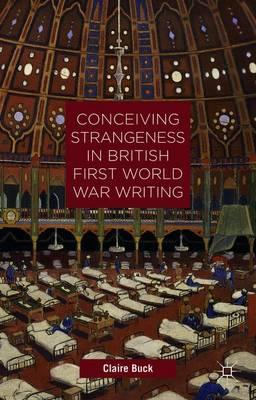Overview
This book reframes British First World War literature within Britain's history as an imperial nation. Rereading canonical war writers Siegfried Sassoon and Edmund Blunden, alongside war writing by Enid Bagnold, E. M. Forster, Mulk Raj Anand, Roly Grimshaw and others, the book makes clear that the Great War was more than a European war.
Full Product Details
Author: C. Buck
Publisher: Palgrave Macmillan
Imprint: Palgrave Macmillan
Dimensions:
Width: 14.00cm
, Height: 1.60cm
, Length: 21.60cm
Weight: 4.287kg
ISBN: 9781137471642
ISBN 10: 1137471646
Pages: 249
Publication Date: 09 April 2015
Audience:
Professional and scholarly
,
Professional & Vocational
Format: Hardback
Publisher's Status: Active
Availability: In Print

This item will be ordered in for you from one of our suppliers. Upon receipt, we will promptly dispatch it out to you. For in store availability, please contact us.
Reviews
A number of suggestive illustrations and photographs from periodicals, primarily the Illustrated London News, and from the Imperial War Museum in its early days are also included. ... This will be a significant contribution to the field, impressive not only for the attention paid to underexplored sources, but also for the far-reaching implications of considering strangeness as a way of reconceptualizing our perceptions of the home front and the war zones. (Emma Liggins, Women's Writing, September, 2016) Buck's book begins with the commonsensical position that most English WW I writing has focused on the English perspective on the Western front or the home front, and in so doing has offered a narrow perspective that elides the war's global dimension. ... Summing Up: Recommended. ... Upper-division undergraduates through faculty. (G. Grieve-Carlson, Choice, Vol. 53 (6), February, 2016) In Conceiving Strangeness in British First World War Writing, Claire Buck finds that how wartime and postwar writers saw Britain as an imperial nation determined in large part how they thought of World War I. ... The author therefore offers us a valuable and often neglected perspective, which is worthy of consideration in a class about World War I or when writing about that massive conflict. (Stephen E. Tabachnick, English Literature in Transition, Vol. 59 (1), January, 2016)
In Conceiving Strangeness in British First World War Writing, Claire Buck finds that how wartime and postwar writers saw Britain as an imperial nation determined in large part how they thought of World War I. ... The author therefore offers us a valuable and often neglected perspective, which is worthy of consideration in a class about World War I or when writing about that massive conflict. (Stephen E. Tabachnick, English Literature in Transition, Vol. 59 (1), January, 2016)
A number of suggestive illustrations and photographs from periodicals, primarily the Illustrated London News, and from the Imperial War Museum in its early days are also included. ... This will be a significant contribution to the field, impressive not only for the attention paid to underexplored sources, but also for the far-reaching implications of considering strangeness as a way of reconceptualizing our perceptions of the home front and the war zones. (Emma Liggins, Women's Writing, September, 2016) Buck's book begins with the commonsensical position that most English WW I writing has focused on the English perspective on the Western front or the home front, and in so doing has offered a narrow perspective that elides the war's global dimension. ... Summing Up: Recommended. ... Upper-division undergraduates through faculty. (G. Grieve-Carlson, Choice, Vol. 53 (6), February, 2016) In Conceiving Strangeness in British First World War Writing, Claire Buck finds that how wartime and postwar writers saw Britain as an imperial nation determined in large part how they thought of World War I. ... The author therefore offers us a valuable and often neglected perspective, which is worthy of consideration in a class about World War I or when writing about that massive conflict. (Stephen E. Tabachnick, English Literature in Transition, Vol. 59 (1), January, 2016)
Author Information
Claire Buck teaches English at Wheaton College, in Massachusetts, USA. She is the author of H.D. and Freud: Bisexuality and a Feminine Discourse (1991) and editor of The Bloomsbury Guide to Women's Literature (1992), as well as numerous articles on Modernism, women's war poetry, and the First World War.




